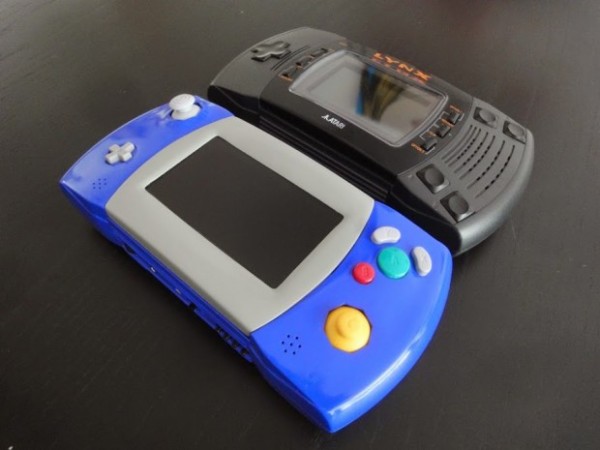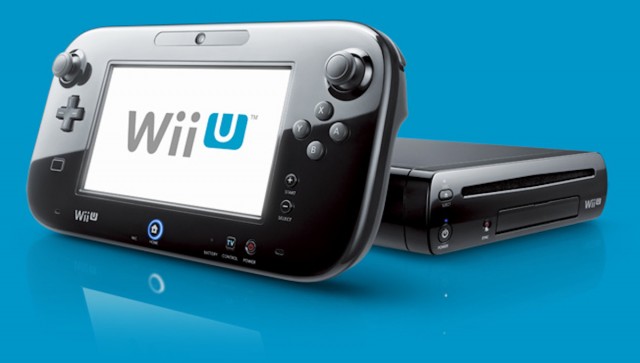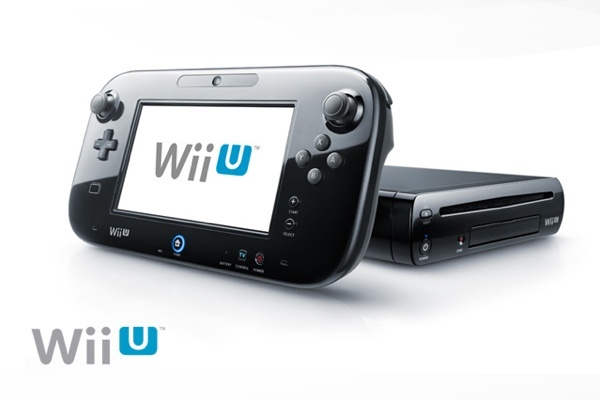

Image via: NeoGaf
Sony, Microsoft, Nintendo, Sega and a few others have generously flooded the world with handheld and home video game consoles over the years. How can one decide which console is alone above the rest? Well, popularity isn’t a bad way to decide, and if we’re going for popularity, sales is an excellent way of distinguishing between big hits and more fringe successes.
Image via: Wikipedia
30. Intellivision: Released by Mattel (Yes, the Barbie company) in 1979, Intellivision has sold over 3 million units to date. It was discontinued in 1990, and remained Mattel’s only gaming console ever produced until 2006. It is considered by some as the first 16-bit gaming console.
Image via: Wikipedia
29. Color TV-Game: A forgotten Nintendo creation, Color TV-Game sold over 3 million units since its release in 1977. It was the best selling console of the first generation, and actually ran on C batteries, while all models came with an AC adapter.
Image via: Wikipedia
28. WonderSwan: Released by Bandai in 1999, this handheld console sold around 3.5 million units until it was discontinued in 2003. During its lifespan, no variation of the WonderSwan was released outside Japan. At its peak, it managed to obtain as much as 8% of the Japanese handheld video game console market before being marginalized by Nintendo.
Image via: Wikipedia
27. Sega Pico: An educational gaming console released by Sega in 1993, the Pico sold over 3.6 million and over 11 million game cartridges, which were referred to as were referred to as “Storyware”. It was succeeded in Japan by the Advanced Pico Beena.
Image via: Wikipedia
26. PlayStation Vita: Sony current (8th generation) handheld console, it was the successor to the PlayStation portable, released in 2011. There are no official figures for the Vita, but it is said to be around 9 million, possibly more. The Japanese Vita release o Minecraft is considered the console’s most successful game.
Image via: Wikipedia
25. Dreamcast: Released by Sega in 1998 (Japan, 1999 in USA), the Dreamcast is the first of the 6th generation consoles, preceding the PS2 and Xbox. The Dreamcast was also Sega’s final home console, marking the end of the company’s 18 years in the console market. It sold around 9.15 million units worldwide.
Image via: Wikipedia
24. Sega Saturn: A disappointing mid-90’s release by Sega, selling 9.3 million units of it worldwide. The Saturn featured games in CD-ROM format, and famous for several well-regarded games, including Nights into Dreams, the Panzer Dragoon series, and the Virtua Fighter series. The failure of Sonic X-treme (a game cancelled before it came out) was a major factor in the Saturn’s decline.
Image via: Wikipedia
23. TurboGrafx-16: Created in a combined effort by NEC and Hudson Soft, the TurboGrafx-16 sold around 10 million units since its late 80’s release. Known as the PC engine in some parts, the Japanese version of it is the smallest major home game console ever made. While a hit in Japan, it failed to leave a mark on the North American market.
Image via: Wikipedia
22. Sega Game Gear: An 8-bit handheld console released by Sega in 1990, the Game Gear has sold around 10.6 million units over the years. Due to issues with its short battery life, lack of original titles, and weak support from Sega, the Game Gear was unable to surpass the Game Boy.
Image via: Wikipedia
21. Master System: The Master System by Sega sold close to 13 million units from 1985 to 1992, initially known as the Sega Mark III when it came out in Japan. A 3rd generation console, it was criticized many times ofr its relatively small gaming library.
Image via: Wikipedia
20. Wii U: The first of the 8th generation consoles, Nintendo’s Wii U was discontinued at the beginning of 2017, marking a run of less than five years on the market, in which it sold 13.5 million units. It was criticized for the GamePad’s battery life and issues with the console’s user interface and functionality, along with a weak lineup of launch titles and a lack of clear goals.
Image via: Wikipedia
19. Xbox One: According to several estimates, the Xbox One has sold between 19 and 20 million for Microsoft, about half the numbers the PlayStation 4 has produced. The Xbox One S helped rectify some of the problems of the initial release, which included running games at a technically lower graphical level than the PlayStation 4.
Image via: Wikipedia
18. GameCube: Nintendo’s 6th generation gaming console sold 21.7 million units since its release in 2001 until it was discontinued six years later. It was criticized for its design and lack of special features, while praised for its high-quality games and extensive software library.
Image via: Wikipedia
17. Xbox: The original Xbox came out in 2001 and was still available in North America until 2009. It sold over 24 million units worldwide. Microsoft’s 6th generation console, it was the first console to feature a built-in hard disk, and was graphically superior to its rivals. It still trailed the PS2 in sales constantly.
Image via: Wikipedia
16. Atari 2600: Also known as the Atari VCS, it is credited with popularizing the use of microprocessor-based hardware and ROM cartridges containing game code, a format first used with the Fairchild Channel F video game console in 1976. Released in 1977, it sold around 30 million units over the years.
Image via: Wikipedia
15. Sega Genesis: Known as the Mega Drive outside the United States, Sega’s 4th generation console was also its most successful, selling close to 31 million units from 1988 until 1997. While it didn’t do well in Japan vs the Nintendo and the PC Engine, it positioned itself as the “cool” console thanks to its gaming library and especially the Sonic franchise.
Image via: Wikipedia
14. Nintendo 64: The Nintendo 64 was a 5th generation console and Nintendo’s 3rd home video console for the international market. It was the last major console to use the cartridge as its primary storage format until the Nintendo Switch which came out this year. It sold just under 33 million units.
Image via: Wikipedia
13. Super Nintendo Entertainment System: The SNES came out in 1990 and was discontinued in 2003, in the process selling over 49 million units worldwide. It was the best selling console of the 16-bit era, helping Nintendo dominate the Console Wars of the early 1990’s and late 80’s against Sega.
Image via: Wikipedia
12. Playstation 4: The big winner of the 8th generation console wars, the Sony’s PS4 has sold over 60 million units since coming out in 2013, positioning itself above the Xbox One with a much better lineup of console-only games, a simpler digital rights management scheme and superior performance capabilities.
Image via: Wikipedia
11. Nintendo Entertainment System: The NES brought the American video game industry back to life after its crash in 1983, and was the best selling console of its time, with an estimated 62 million units sold from 1983 to 2008. It is usually ranked 1st or 2nd in the various ‘best console of all-time rankings’.
Image via: Wikipedia
10. Nintendo 3DS: Of the consoles still being sold today, home or handheld, the 3DS is the biggest success, so far selling over 66 million units. It has undergone various modifications over the years; the New Nintendo 3DS (and XL) features a more powerful CPU, a second analog stick called the C-Stick, additional buttons, an improved camera, and other changes, and was first released in Japan in October 2014.
Image via: Wikipedia
9. Game Boy Advance: A 32-bit handheld console sold by Nintendo from 2001 through 2010, it sold 81.5 million units during its run, maintaining the company’s dominance in the portable consoles market through the first decade of the new millennium.
Image via: Wikipedia
8. PlayStation Portable: A 7th generation handheld console by Sony, the PSP was a massive hit after coming out in 2004 (discontinued in 2014), selling close to 82 million units worldwide. It was the most power portable device when launched, and managed to give Nintendo a glimmer of competition, something that’s never been done in the handheld market.
Image via: Wikipedia
7. PlayStation 3: The one time Sony lost to Microsoft was with the PlayStation 3 vs the Xbox 360. Released in 2006, the PS3 sold 83 million units, and was the first console to use Blu-Ray disc as its primary storage medium. It had a slow start on the market, but the introduction of the ‘slim’ model helped it bounce back.
Image via: Wikipedia
6. Xbox 360: Narrowly beating the PS3 with 84 million units sold since 2005, the Xbox 360 is Microsoft’s most successful console, and is still supported by the company although they are no longer being manufactured. The release of wireless controllers, expanded hard drive storage, and the Kinect motion sensing camera helped the Xbox brand grow from gaming-only to encompassing all multimedia.
Image via: Wikipedia
5. Wii: The 3rd major 7th generation console, the Wii targeted a wider demographic with more family-oriented console-specific games, giving Nintendo yet another sectorial best-seller with over 101 million units sold since 2006, with the original edition discontinued, but the Wii in mini and family edition form still being sold.
Image via: Wikipedia
4. PlayStation: Sony brought out the first PlayStation in 1994, and the rest is history. This 5th generation console sold 102.5 million units. Games for the PlayStation continued to sell until Sony ceased production of PlayStation games on 23 March 2006 – over 11 years after it had been released.
Image via: Wikipedia
3. Game Boy: Released in 1989 and later upgraded through the Game Boy Color, the Nintendo 8-bit handheld device sold over 118 million units until 2003. Being bundled with Tetris during its initial launch helped make it such a massive success, along with its rugged look and excellent battery life.
Image via: Wikipedia
2. Nintendo DS: The most successful handheld console of all-time, the Nintendo DS sold 154 million units from 2004 to 2014. While it had humble beginnings, marketed as a way to complement the Game Boy Advance and GameCube, its backward compatibility with Game Boy Advance titles and strong sales ultimately established it as the successor to the Game Boy series
Image via: Wikipedia
1. PlayStation 2: Narrowly edging the Nintendo DS, the PS2 is the best-selling console of all-time, released in 2000 and staying available on retail until 2013, with games like PES2014 and FIFA 14 still made for the console before it was discontinued. It sold over 155 million units, with more than 3,874 game titles have been released for the PS2 since launch, and more than 1.5 billion copies have been sold.


